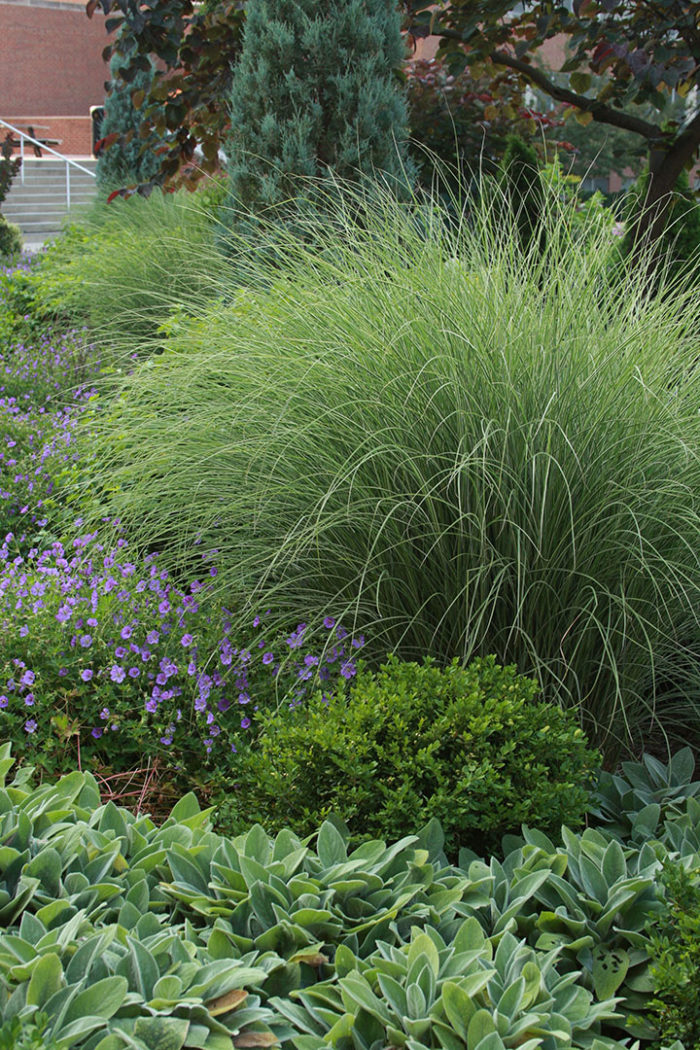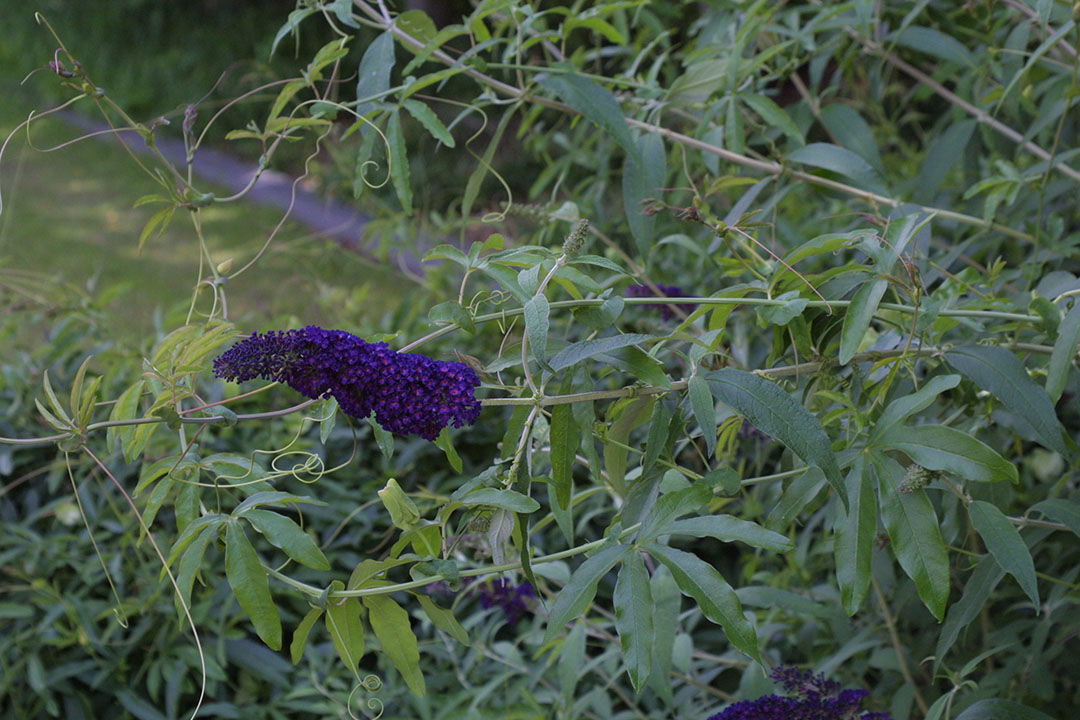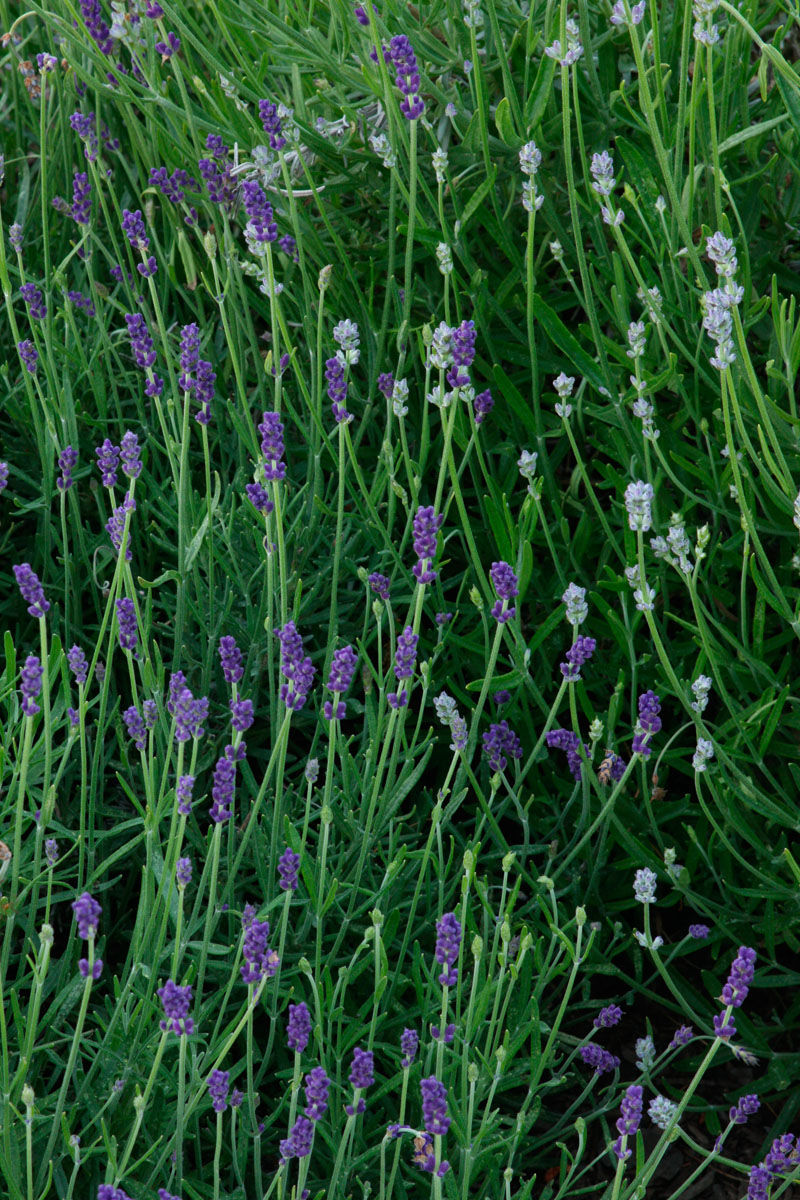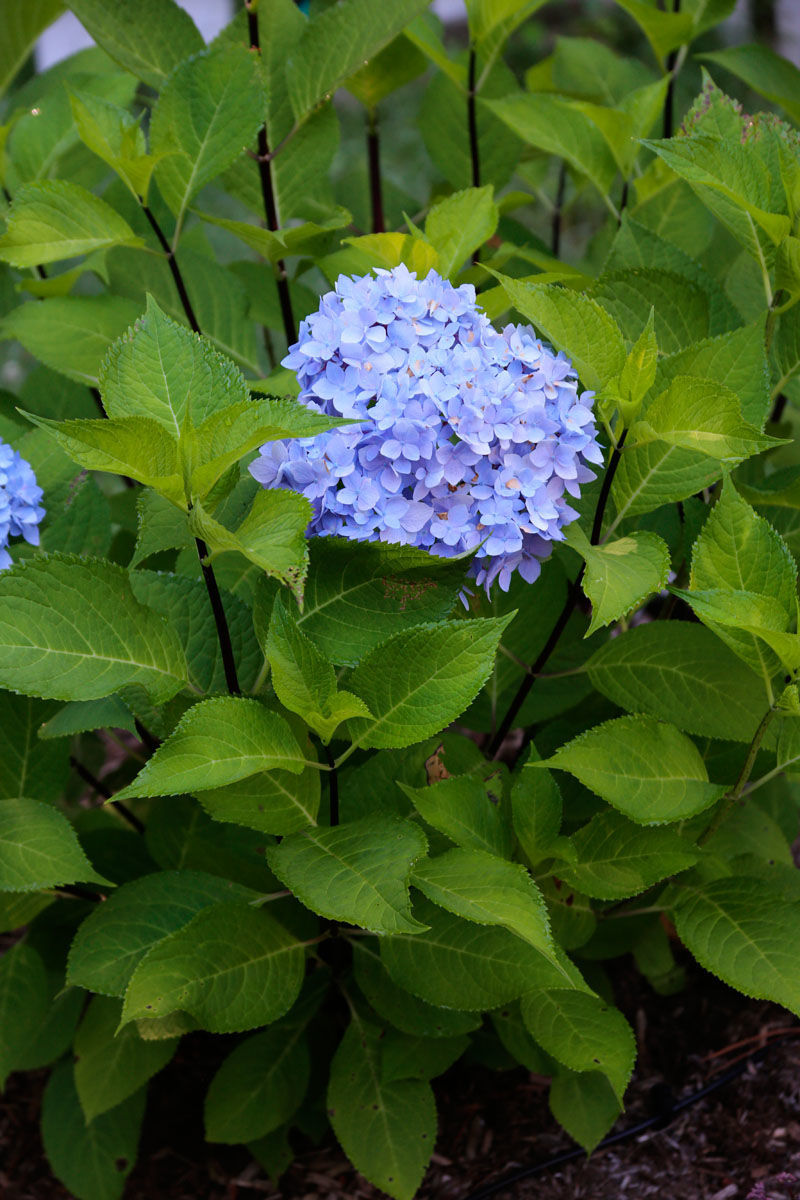
In a perfect world, every plant we purchase would be well-behaved, pest-free, and a show-stopper 12 months a year. This is not a perfect world. Despite our best intentions, sometimes we buy or inherit plants that are mistakes…big mistakes. (We’re talking to you, miscanthus.) In this cathartic episode, Steve and Danielle lament and vent about all the plants that brought them nothing but headaches. Some may look pretty but aren’t worth the troubles they bring with them. All we can say after listening is “You’ve been warned.”
Expert testimony: Jeff Epping, director of horticulture at the Olbrich Botanical Garden in Madison, Wisconsin.
Yes, it attracts butterflies, but it also self-sows on an epic level. There’s a reason that butterfly bushes like ‘Black Knight’ (Buddlelia davidii ‘Black Knight’, Zones 5–9) are considered invasive thugs throughout a big swath of the country.
‘Hidcote’ lavender (Lavandula angustifolia ‘Hidcote’, Zones 4–9) looks great the first year, wonky the second, and like a gnarly walking stick by the third. Despite a diligent pruning regime, this woody perennial never seems to look good as it ages.
We don’t have anything against most ornamental grasses, but ‘Morning Light miscanthus (Miscanthus sinensis ‘Morning Light’, Zones 5–9) is a beast. Not only does it self-sow obnoxiously, but it also gets big and unruly quickly—which requires frequent, backbreaking division.
Bigleaf hydrangeas just aren’t suited for cooler zones. Although ‘Nigra’ bigleaf hydrangea (Hydrangea macrophylla ‘Nigra’, Zones 6–9) has lovely black stems, its failure to bloom year after year due to cold snaps in spring made it a disappointing choice for Danielle’s garden.
PLANT LIST
STEVE
‘Morning Light’ miscanthus (Miscanthus ‘Morning Light’, Zones 5–9)
Redtwig dogwood (Cornus sericea and cvs., Zones 3–8)
Butterfly bush (Buddleia spp. and cvs., Zones 5–8)
Oregano (Origanum vulgare, Zones 4–9)
DANIELLE
‘Nigra’ bigleaf hydrangea (Hydrangea macrophylla ‘Nigra’, Zones 6–9)
‘Hidcote’ lavender (Lavandula angustifolia ‘Hidcote’, Zones 5–8)
‘Lime Rickey’ heuchera (Heuchera ‘Lime Rickey’, Zones 4–9)
‘Banana Cream’ shasta daisy (Leucanthemum ‘Banana Cream’, Zones 5–9)





















Comments
You did not include Carolina Jasmine or Autumn Clematis both of which have begun to take over my yard! The Jasmine AND the Clematis have crept under the driveway and are happily (for them, not me) taken up residence in ALL my surrounding gardens!
Addendum, you also did not include Wisteria! Lovely in bloom but seeds and takes over trees, gazebos, and anything else that will support this monster. Wish I'd never seen it.
I think it depends so very much on where you live. In Texas, zone 8, on caliche soil, I grew Buddlelia davidii ‘Black Knight’. It was gorgeous and didn't self-sow at all where as Ruellia brittoniana was an aggressive thug in my garden. Calamagrostis acutiflora Karl Foerster grass, which is reportedly an easy-care grass with few pests and/or diseases has been anything but. Both in times of drought and wet-weather it looks puny, holds onto rust, and has never flowered. I have six of them all over the yard and not one is doing well. I'm yanking them out this year.
Some good info in this article, I saved some to my garden files.
And Houttinya/Chameleon Plant. I thought the variegated ivy-like foliage would work as groundcover under a short tree. What a mistake.
fast spreader & grew taller than I'd wanted, emits a horrible benzene smell when cut. And very difficult to remove. The root system is simple & shallow but fragile. You have to be very careful removing the entire root, not to break it. A tiny piece, the size of an eyelash, will produce a plant. It took about 3 yrs of careful trowel work to clear a small 4' x 4' underplanting.
Forgot echinops. . No one told me to deadhead. Between seed heads and underground roots like Canadian thistle, I had to totally dig up my oval 16 x 13 "blue bed" as it was taking over everything! And it even spread into my lawn!
Chasmanthium latifolium, ie River Oats, is a terrible thug! Despite being a native, I would never suggest that anyone plant it. Every single seed seems to germinate, especially right next to your prized plants so then you can't even use glyphosate. It must be weeded by digging up the roots because the stems break off above the crown and then it grows again.
The director of an arboretum steered me away from Cornus sericea to Cornus alba instead. Of course, is has been unusually wet the last 18 months. But so far the albas have performed beautifully. A trick I learned from FG is to plant thugs together, so I let the Amsonia slug it out with the Baptisia.
That's interesting. I'm in MD zone 7. Baptisia spreads like crazy but Amsonia has never spread at all!
Log in or create an account to post a comment.
Sign up Log in